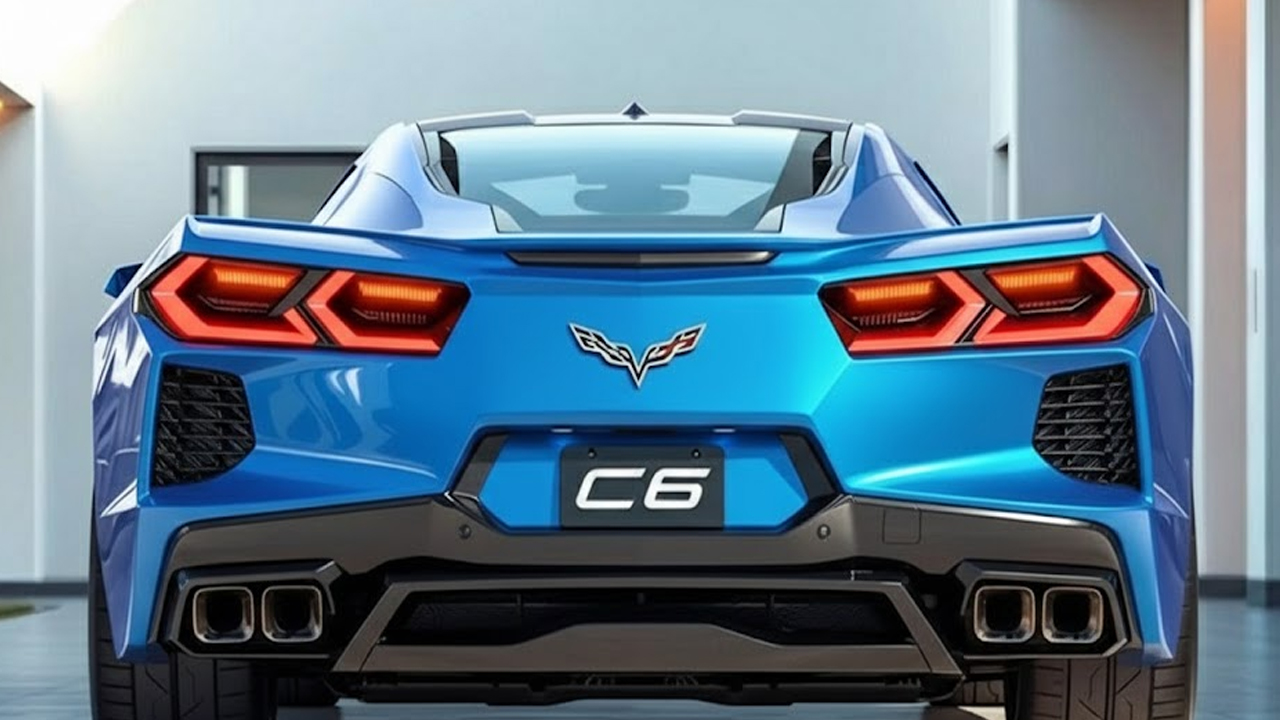Since its debut in 1953, the Chevrolet Corvette has represented the heart of American performance. Each generation has carried a legacy of innovation, style, and power, but by the time the sixth generation-or C6-entered production, Chevrolet was ready to make a bold statement. The 7th model year of the C6, in particular, became a defining moment. It was the year when the Corvette broke away from being just a fast car and stepped into the realm of a precision-engineered sports machine that could rival European supercars on every front.
The legacy behind this moment didn’t happen overnight. Chevrolet engineers spent years studying aerodynamics, handling dynamics, and driver experience to craft a Corvette that would embody the perfect balance between raw power and refined control. The 7th model year was not just another update-it was a breakthrough that redefined what an American sports car could achieve.
How the design evolution of the C6 set new standards
The C6 marked a major departure from its predecessor, the C5. It was leaner, tighter, and more aggressive, featuring exposed headlamps for the first time in decades and a sculpted body designed to cut through the air with precision. The 7th model year took that evolution further with improved aerodynamics and structural rigidity, making the car both faster and more stable at high speeds.
Chevrolet’s design team focused on reducing drag while maintaining the Corvette’s signature muscular stance. The result was a car that looked just as fast as it felt. The proportions were pure performance-long hood, short rear deck, and a cockpit positioned closer to the rear axle for better weight distribution. It wasn’t just about aesthetics; every curve served a purpose, improving airflow and cooling to support the incredible power under the hood.
When Chevrolet decided to elevate the Corvette experience
The 7th Corvette C6 model year marked a philosophical shift for Chevrolet. The company decided it was time to move beyond raw horsepower numbers and focus on the total driving experience. This was when Chevrolet brought advanced engineering into the mix-lightweight materials, race-inspired suspension tuning, and a refined cabin that made the Corvette feel more premium than ever before.
It was during this era that the Corvette transitioned from being a weekend track toy into a daily-drivable performance machine. The fit and finish improved dramatically, cabin noise was reduced, and driver-focused ergonomics made long journeys just as enjoyable as high-speed runs. Chevrolet knew that to compete with Europe’s best, it needed to offer not only speed but sophistication-and the C6 delivered both.
What is the powertrain that transformed the 7th model year
The heart of the 7th Corvette C6 was its extraordinary powertrain. Under the hood sat the LS3 6.2-liter V8 engine, producing over 430 horsepower in its standard configuration. This engine represented a leap forward in performance and efficiency, offering more power while maintaining reliability and everyday usability.
For those who craved even more, Chevrolet introduced the mighty Z06 and ZR1 versions. The Z06 featured a lightweight aluminum frame and a 7.0-liter LS7 V8-an engineering masterpiece that could rev to 7,000 RPM and push the car from zero to sixty in under four seconds. The ZR1 took things to an entirely new level, boasting a supercharged LS9 engine with 638 horsepower, making it one of the most powerful production cars of its time.
This combination of brute force and refined engineering ensured that the 7th Corvette C6 was not only thrilling to drive but also dependable, something that couldn’t always be said for its European competitors.
How the C6 redefined handling and driver control
Performance isn’t just about speed-it’s about control. The 7th model year C6 brought a level of precision handling that shocked the automotive world. It featured an advanced suspension setup with magnetic ride control, giving drivers the ability to switch between comfort and sport settings seamlessly. This adaptive system read road conditions and adjusted damping in real-time, delivering stability during aggressive cornering without sacrificing ride quality.
The C6 also benefited from near-perfect weight distribution, which improved balance and responsiveness. Steering feedback was sharper, braking distances were shorter, and cornering felt more intuitive than ever. Chevrolet engineers achieved this by fine-tuning every aspect of the chassis, from tire compound to differential calibration. The result was a car that could dominate the track yet remain composed on everyday roads-a combination that had long been dominated by European marques.
When technology met tradition in the C6 cockpit
Inside the 7th model year C6, Chevrolet introduced a cabin that finally matched its performance credentials. The design team reimagined the interior with higher-quality materials, ergonomic seating, and a more intuitive layout for the driver. The use of leather, aluminum trim, and improved instrumentation transformed the cockpit into a space that felt modern yet unmistakably Corvette.
For the first time, drivers experienced a true sense of connection between human and machine. The controls were responsive, the seats supportive during spirited driving, and the visibility improved thanks to the car’s refined proportions. It was this fusion of technology and tradition that elevated the Corvette C6 into a new category of performance car-one where luxury and adrenaline coexisted seamlessly.
What is the cultural impact of the 7th Corvette C6
The 7th model year of the C6 didn’t just impress critics; it changed perceptions. For decades, European sports cars had dominated conversations about refinement and handling, while American cars were seen primarily as powerful but crude. The C6 shattered that stereotype. It proved that an American automaker could produce a machine capable of standing toe-to-toe with the likes of Porsche and Ferrari-at a fraction of the cost.
The C6 became a symbol of pride for enthusiasts who believed in American engineering. It inspired a new generation of designers and drivers who saw that performance and practicality could coexist. The car’s success also laid the foundation for future Corvette generations, including the C7 and C8, which continued to push boundaries in performance and innovation.
How the 7th Corvette C6 still influences modern performance cars
Even today, years after its debut, the 7th Corvette C6 continues to influence how performance cars are built. Many of the engineering principles first perfected in this generation-lightweight construction, magnetic ride control, and aerodynamic efficiency-are now standard in high-performance vehicles across the industry.
Chevrolet’s commitment to balancing affordability with advanced technology remains a benchmark. The 7th model year proved that you didn’t need a European badge to experience world-class performance. It also paved the way for the mid-engine Corvette C8, which owes much of its DNA to the lessons learned during the C6 era.
When history looks back on the C6 and its lasting legacy
When automotive historians look back on the Corvette’s journey, the 7th C6 model year will always stand out as a turning point. It was the moment when Chevrolet stopped following trends and started setting them. The C6 represented a perfect blend of power, precision, and personality-a combination that redefined what an American sports car could be.
The 7th model year didn’t just make the Corvette faster; it made it smarter, more capable, and more respected on the global stage. It remains a testament to how innovation, passion, and a relentless pursuit of excellence can transform a beloved classic into a true legend of performance.



